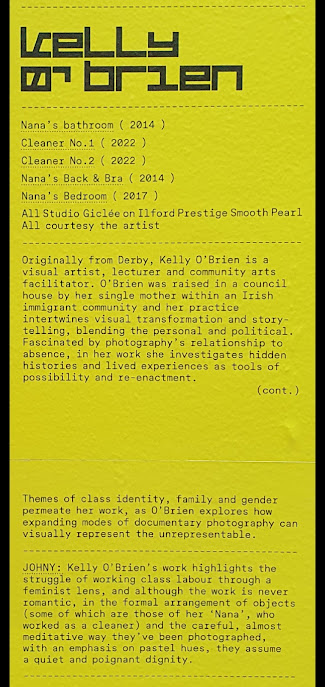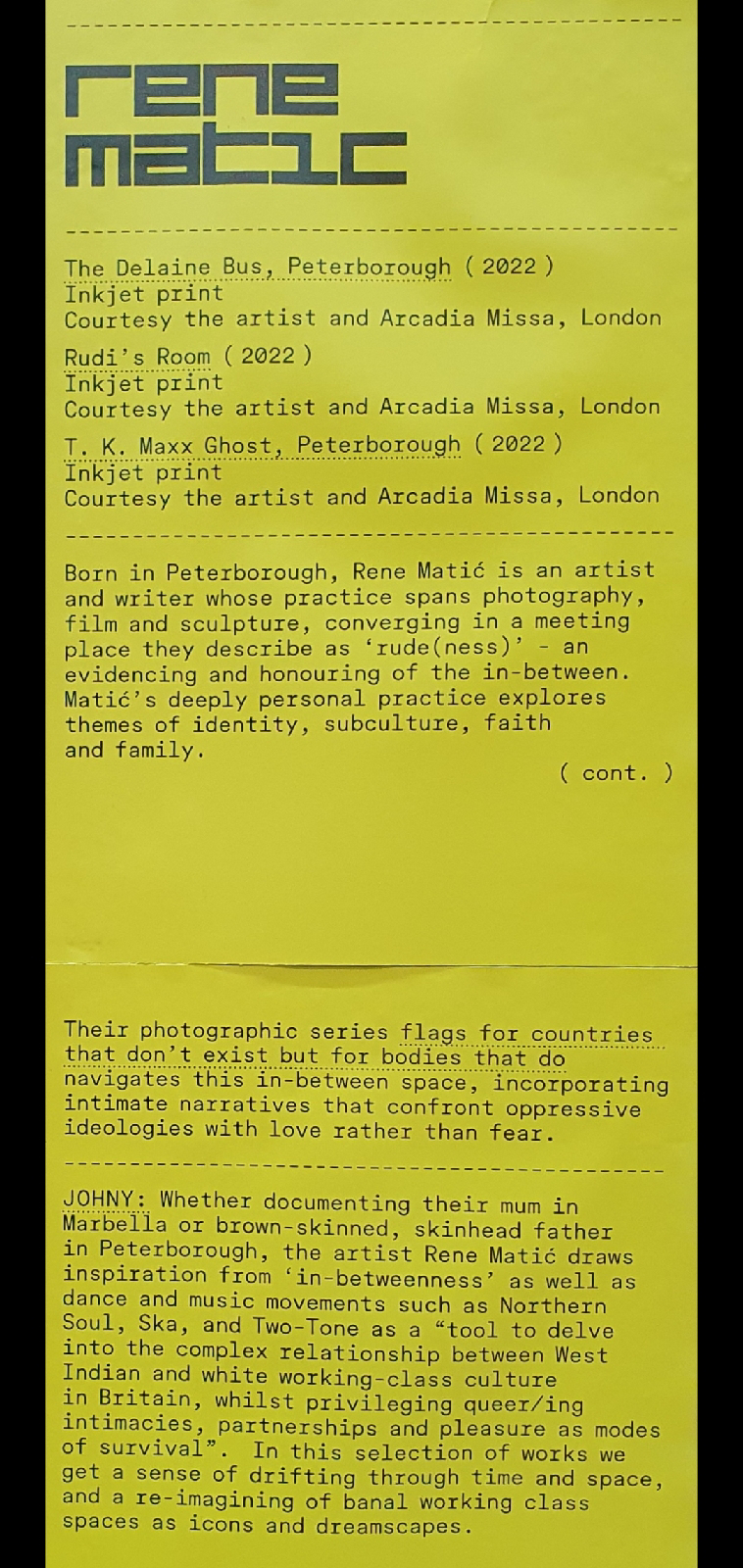Author: beth
-
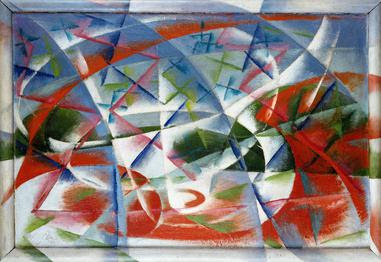
Modernism
Modernism is a response to social change and advancements in technology on both an individual and a mass psyche level. I am struck by the poignancy of writing a piece on Modernism at this time, where emerging technology is redefining every facet of human life in an unprecedented way; with no honest answer as to the consequence. The human desire to bridge gaps in knowledge and connection is fundamental, and this is as manifest now in 2024 for the billionaires who fire phallic rockets into space as it was for futurists who extolled the virtue of mechanisation in the 1920s. I reference Icarus too as I quote Jurassic Park now. Humans were and still are, ‘So preoccupied with whether or not they could, they didn’t stop to think if they should.’
The Italian fascist and misogynist Marinetti spoke of mechanised speed in almost religious terms, urging that people ignored and destroyed the past, and instead looked to the new, to the revolutionary. The industrial revolution had offered the novelty of the engine and this appealed greatly to him, sitting in stark contrast with his pastoral rural background. He had yet to observe mechanised war and the unthinkable horrors of WWI, made possible by the same technology that he spoke of in his Futurist Manifesto: ‘The worlds magnificence has been enriched by a new beauty, the beauty of speed.’ In the early 1900’s, several European artists gravitated towards the dominant art movement of Futurism, expanding on its enthusiasm for fascist revolution, anarchy, the machine and the dynamism of modern life. Many of them were also Italian, including Giacomo Balla, who finished painting ‘Velocità astratta + rumore’, or ‘Abstract sight + sound’, just before war reached his home country.
‘Velocità astratta + rumore’, Giacomo Balla, 1913 – 1914
It depicts the motion and sound of a racing automobile, a machine that became synonymous with Futurism. In trying to overcome the problems inherent in painting movement, Balla included crisscross motifs throughout the piece, suggestive of the infinite multiplication of noise, speed and power generated by an engine at full throttle. The abstracted red form of the car cuts through the green background and blue sky, transforming the landscape in a swirl of energy. The painting extends beyond the canvas and onto the frame, pushing the image into the viewer’s reality. It is a painting fully in thrall of the novelty of the machine; and so it perfectly captured the aggressive ideals of Futurism. The advent of WWI meant that these word’s from The Futurist Manifesto rang with sombre irony just some 5 years after they were written: “We will glorify war—the world’s only hygiene—militarism, patriotism, the destructive gesture of freedom-bringers, beautiful ideas worth dying for, and scorn for woman.”
Six years after Balla’s hymn to the engine, Otto Dix created his haunting and surreal painting ‘The Skat Players’ , which depicts three grotesque and mutilated figures sat around a table, playing cards. Half man and half machine, survivors of the gamble of war, gambling.
‘Die Skatspieler’, Otto Dix, 1920
Dix made a strong statement about the destruction and crippling aftereffects of the war he had survived in this piece. The figures are cripples themselves, with their automaton limbs blending into the furniture; like the veterans of war at the time, who sat neglected, invisible and broken in the society of contemporary Germany. Dix joined the Dada movement when he returned home from the trenches, his earlier excitement about the war shattered by the senseless slaughter he had witnessed on the battlefield. Dadaism critiqued the ineffectiveness of its predecessor, Expressionism, in achieving true political impact. So too did the New Objectivity, or New Realism, movement. Having lived through WWI and WWII, Dix had much to say about the dark political and social climate in Europe during that era and was therefore a pivotal contributor to both movements, employing art as a tool for moral and cultural protest and agitation.
Throughout this painting dark oil paint sits next to collage, just as the officers prosthetics sit next to their flesh. It is a strong and shocking image that represents the cultural, social, psychological and spiritual trauma of its time. The humour and sympathy visible in the piece speaks of Dix’s own trauma, and helps his message land in an accessible way. This subtle gentleness is disarming and makes a sincere connection between artist and audience more possible.
These pieces tell of a very different relationship with technology. Such is the power of art, that it can convey dramatic shifts in the human experience so potently. It is sobering to reflect on this as we step into a future where AI will be universal and humans are made the commodity of the future. As I humbly reflect on the role of the artist to comment on and inform spiritual, psychological cultural and social human experience made visible throughout Modernism, I feel more compelled than ever to encourage dialogue about emergent technology in my work.
ReplyForward -
Shock of The New – Robert Hughes
This documentary series was pitched to me by a tutor as an excellent grounding in art history, curated by a bombastic knowledgeable Australian academic. And they were not wrong.
Despite it being produced in the early 80’s, Hughes voice is still relevant. Of course there are some aspects of this documentary series that haven’t aged well, but his dazzling expertise combined with his willingness to share strong opinions is refreshing and gives you something to get your teeth into intellectually.
The first episode was a perfect background for my recent written piece on Modernism. And I enjoyed his rhetoric and the colourful diffuse way he explores art history so much that I just carried on watching. It’s a strong recommendation from me.
-
After The End Of History: British Working Class Photography 1989-2024, Bonnighton Gallery 2024
It was brilliant to see this exhibition in the middle of my counter culture brief. Curated by television presenter, writer and photographer Johnny Pitts, it extended an invitation to contemporary working class artists who turn their photographic lens inwards, examining themselves, those closest to them and their wider communities.I have personal experience of the counter culture scene in the UK and Europe. My experience of the music, skate and graff counter cultures scenes were formative for me as a young adult; and they continue to inform me as an artist and DJ.It was really a joy to see elements of the 80’s and 90s rave scene being celebrated in a gallery space. It’s not usual to have this kind of retrospective elevated into gallery space and I really applaud the curator and the gallery for pushing this boundary.I particularly enjoyed the work shown by Kelley O’Brien and Rene Matic.For more information about the exhibition please see https://boningtongallery.co.uk/event/after-the-end-of-history/. -
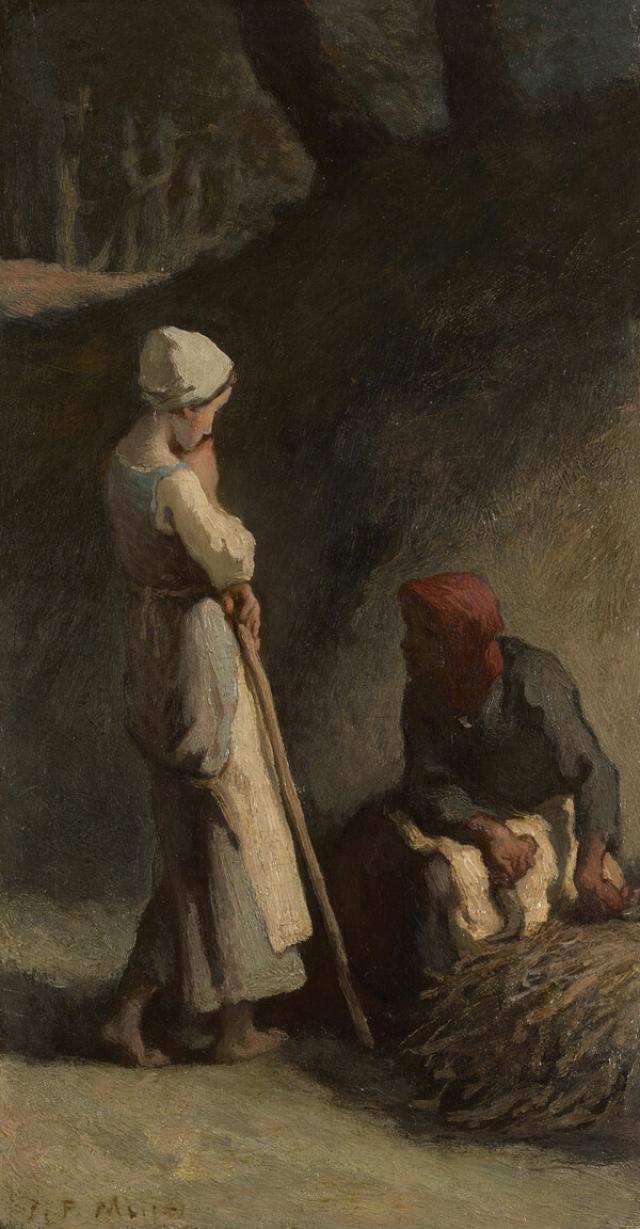
Jean-François Millet and having a social realism lens on my anti facial recognition mask project
As a part of emphasising the class issue being discussed, I want to focus on everyday people as my main subjects. This way I can focus on the everyman instead of their capitalist leaders.
Jean-François Millet was a forerunner of this style. He trained as an academic painter but gravitated towards creating pieces that focused on figures in landscape; they reminded him of the rural labourers from his childhood in Normandy.Jean-François Millet The Faggot Gatherers About 1850 – 1855He applied classical composition and symbolism to create extremely detailed and realistic paintings that idealised the peasants he depicted.You can read more about Millet at https://www.nationalgalleries.org/art-and-artists/artists/jean-francois-millet. -
Facial Recognition Software & Eye Gaze Technology
Shop shelves are being fitted with eye gaze technology to facilitate “persuasive design” to manipulate us into buying more.
Eye gaze technology has it’s origins in communications tools for
Important to discuss that this technology has its origin in disability aid and blanket railing against it’s use is ablism.
-
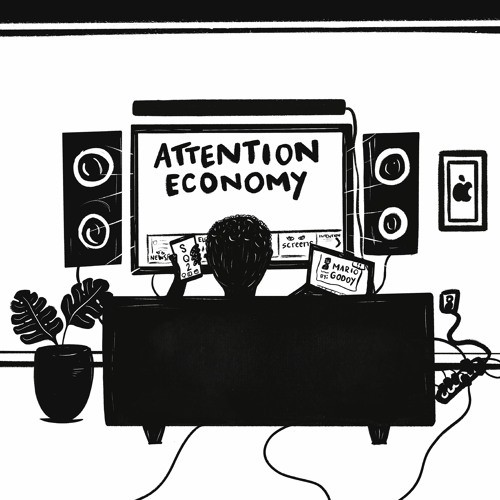
Attention commodification as a symptom of late stage Capitalism
“Our attention is a commodity, just like gold or silver or such, only our attention isn’t tangible. Company’s want our attention for various reasons. TikTok, for example, wants our attention because the more attention we give it, the more videos we watch, and the more ads we consume. The more ads people watch, the more company’s want to pay TikTok to put their own ads on the platform. It’s a business model where we are the product and the consumer simultaneously.
Now, if a company wants your attention, there are ways for them to get it. If you take a look at nearly any major technology company, you will see that they too contribute to this growing problem. From Apple to Samsung to Instagram to Snapchat, they all have teams of people whose entire jobs are to keep. you. addicted.
This is a catastrophe, and it extends far beyond just our attention:
Money – The longer we engage with social media, the more advertisements we absorb. Exposure breeds desire, and suddenly, unnecessary purchases seem all the more justifiable. These platforms feed consumerism by design, rendering us more vulnerable to financial manipulation.
Time – Every minute spent on social media is a minute stolen from our finite existence. When we account for essential tasks like work, education, and sleep, we are left with precious little time, yet the average person now squanders over four hours a day on screens. This is time that could be spent on creation, relationships, or personal growth.
Motivation – The most insidious effect of this attention economy is how it erodes our drive and motivation. Why should we struggle through a challenging task when an easy, numbing escape is only a tap away? This addiction to screens dulls our ambition, making it harder to focus on the things that truly matter.
This attention economy is dangerous; it’s a cycle. The more we focus on fleeting digital content, the less we notice the technologies that profit from our distraction, and we begin to lose sight of something crucial: the erosion of our autonomy.”
Source: https://kkensho.medium.com/the-commodification-of-human-attention-f239a7e5d896
Attention is big business and it’s clearly a dirty one at that. And so it has inevitably become the focus of charged economic, moral and political debate in recent years and is also now attracting social activism globally.
The Centre for Humane Technology (CHT), populated by ex silicon valley staff treading their redemption arc, claims that the aggressive and all pervading ways that our attention is being commodified is responsible for a host of individual and social problems; including election engineering, polarization of attitudes, mass narcissism, mental illness, addiction to technology and shortening of attention spans. CHT claims that this “digital attention crisis” is the “cultural equivalent of climate change”.
Source: https://www.annualreviews.org/content/journals/10.1146/annurev-anthro-101819-110356
A large number of the CHT founders feature in documentary ‘The Social Dilemma’ which is worth a watch if you want to learn more about this disconcerting topic. You can find out more at https://thesocialdilemma.com/.
Every era of technological advancement sees natural kick back. People fear what is new and different. But the more nuanced reality is that the technologies being developed now, just as before, are not inherently harmful. They are just tools that can add enormous value when used safely and ethically.
They are only harmful because they are being employed to manipulate and distract us by the wealthiest 1% of humans on our planet, as they doggedly drag us ever further into late stage Capitalism; a name that references the current phase of capitalism as final, exploitative and unsustainable, with the only logical conclusion being a systemic collapse or shift. The phrase ‘late stage Capitalism’ has become increasing popular as people try to expresses their frustrations with the absurdities of our contemporary economy; such as increasing inequality, the shrinking middle class, and the rise of super-powerful corporations who have rigged the system in their favour and appear as influential, if not more so, as governments. All be it through and American lens, the following article helped me to gain clarity on why traditional capitalist economies just aren’t fit for purpose any more, and what alternative solutions need to include; https://www.thebalancemoney.com/late-stage-capitalism-definition-why-it-s-trending-4172369.
-
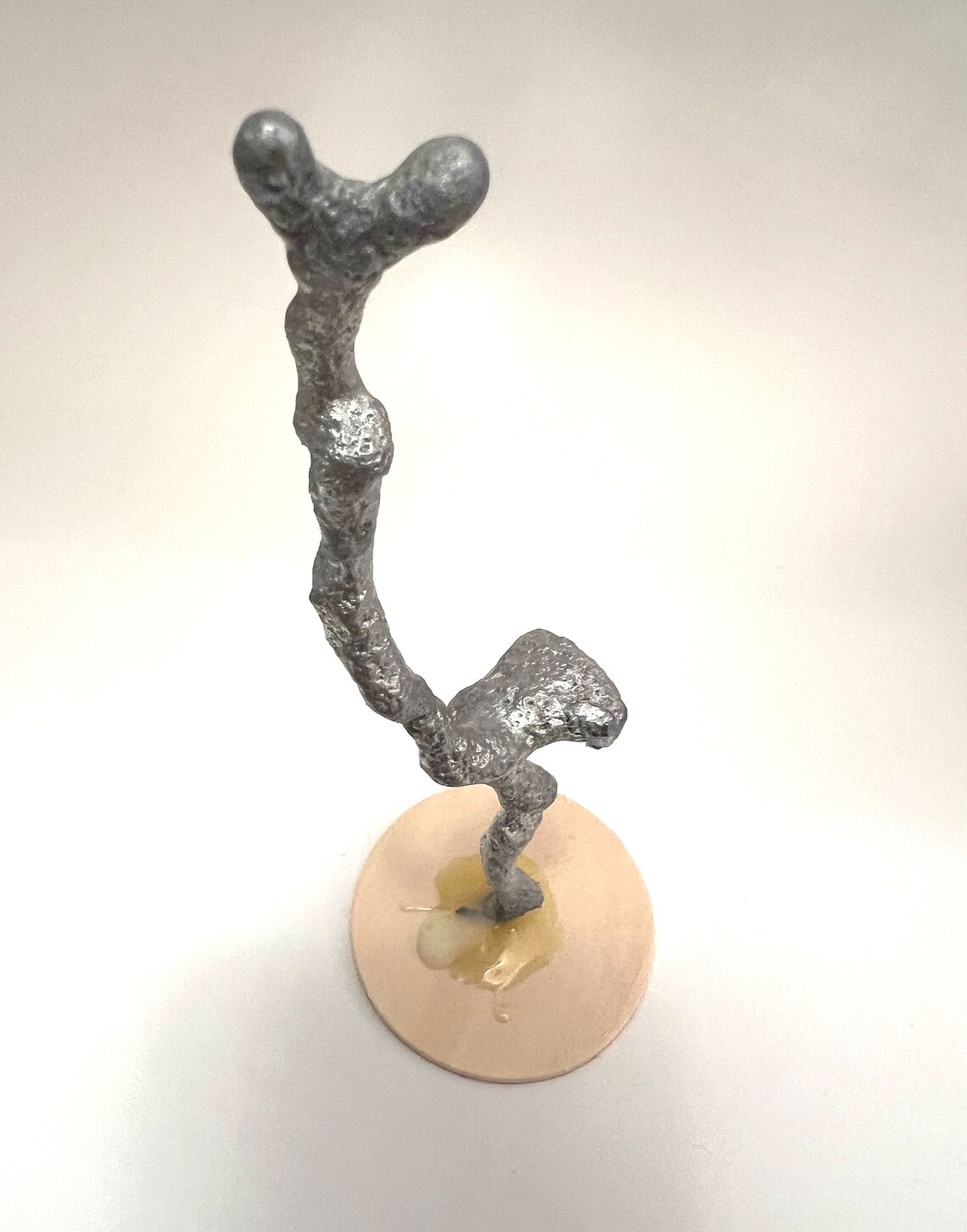
Autumn term brief 2024: Counter Culture
I have three initial ideas that I would like to explore as a part of this brief, all relating to capitalism.
The first involves casting the interior of an ant colony. Ants are being studied by climate change scientists so that they can create alternative decentralisation and logistics models for the future survival of our species. Creating sculptural pieces that represent the interior of these highly adaptable social creatures home is a way that I can tangibly represents the counter culture biomimicry that these scientists are connecting with. And it honours the wisdom of this humble insect.After researching the requirements to make a piece like this, I soon realised that it’s a pretty complicated endeavour. And so it may suit my FMP better. For the meantime I am connecting with engineers and entomologists to further investigate.My second project reworks The Wall Street Bull sculpture by Arturo Di Modica, which stands in the middle of the financial district of Manhattan, New York.“The sculpture was created by Italian artist Arturo Di Modica in the wake of the 1987 Black Monday stock market crash. Late in the evening of Thursday, December 14, 1989, Di Modica arrived on Wall Street with Charging Bull on the back of a truck and illegally dropped the sculpture outside of the New York Stock Exchange Building. After being removed by the New York City Police Department later that day, Charging Bull was installed at Bowling Green on December 20, 1989. Despite initially having only a temporary permit to be located at Bowling Green, Charging Bull became a popular tourist attraction. Di Modica may have been influenced by a pair of huge metallic sculptures, a charging bull and a bear, placed in front of the Frankfurt, Germany Stock Exchange in 1985 as part of the 400th celebration of the exchange.”
Source: https://en.wikipedia.org/wiki/Charging_Bull
I’d like to rework this piece, creating a subversive sculptural version that swaps out the bulls horns for my fingers. It would be a fitting dream if I could create this piece for free using the 3D printers at the University of Nottingham Chemistry department. I know some of the lab technicians there; we met though the Nottingham counter culture music scene when I started playing on their rig at free parties and have been friends ever since. If isn’t feasible, I will create a silicon jacket mould of a sculpture that I create that I can cast into.
My third project option would focus on attention commodity and anti-facial recognition make-up, also known as CV dazzle. I’d like to do a photographic and video series experimenting with different techniques to should interrupt facial recognition software and eye gaze measurements.
CV Dazzle Looks N°6, N°7. Adam Harvey 2020
“CV Dazzle is a form of camouflage from computer vision created in 2010 as my masters thesis at New York University’s Interactive Telecommunications Program. Unlike traditional camouflage, such as disruptive-pattern material, that hides the wearer from human observation, CV Dazzle is designed to break machine vision systems while still remaining perceptible to human observers. It is the first documented camouflage technique to successfully attack a computer vision algorithm.
In this proof of concept research project from 2010 the technique was used to break the widely-used (at the time) Viola-Jones face detection algorithm by using bold patterning to break apart the expected features of the face detection profiles. This algorithm gradually become deprecated in security around 2013-2016 and is no longer used, therefore the original patterns (designed between 2010-2013) are no longer active looks. But until then it was the only face detection algorithm and therefore created a single point of failure when broken, cascading throughout the security industry. All of sudden a key technology in the previously infallible post 9/11 security apparatus could be foiled by makeup and hairstyles.
The initial CV Dazzle designs work by altering the expected dark and light areas of a face (or object) according to the vulnerabilities of a specific computer vision algorithm. In the image above (Look #5), the design targets the Viola-Jones face detection algorithm, a popular (at the time of development) and open source face detector that is included with the OpenCV computer vision framework. But CV Dazzle is not a specific design or pattern. CV Dazzle is a camouflage strategy to evade computational vision systems that evolves, as camouflage does, alongside the technology it aims to subvert. Patterns and designs are always specific to the wearer, algorithm, and environmental conditions.”




